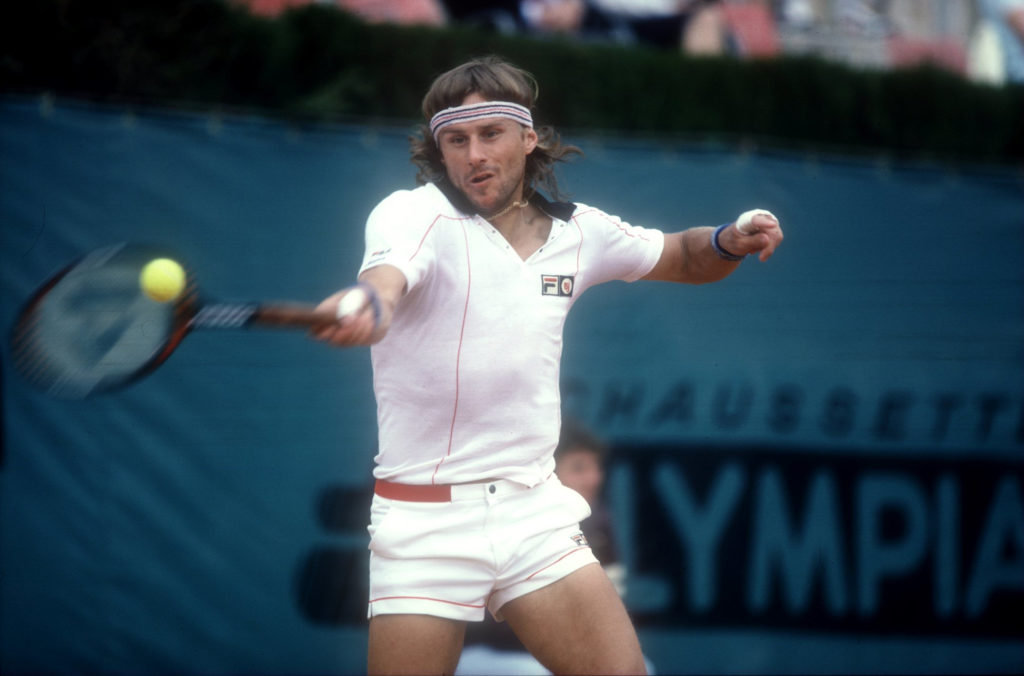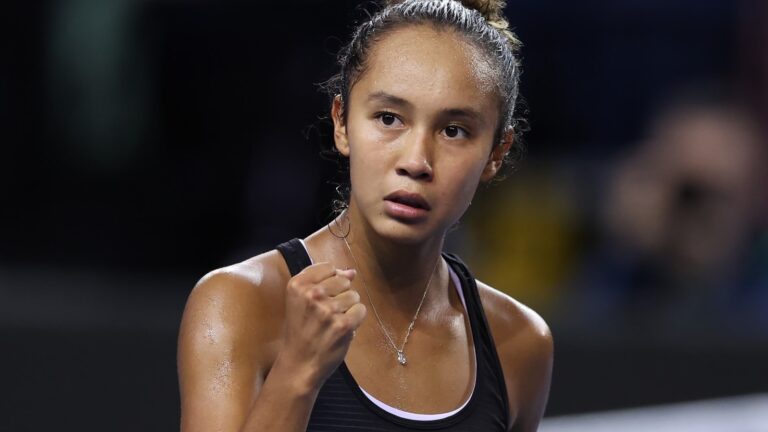
Photo : Wimbledon
Back from its gap year, Wimbledon 2021 was full of promise, but it’s the surprises and court conditions that have captured most of the attention thus far.
If the World No.1s are crowned on July 10 and 11, there won’t be any trace of raised eyebrows in the tournament annals. But if they aren’t, we may end up talking at length about the grass.
Of course, the raised eyebrows I was referring to are in reaction to the courts themselves, which have caused countless slips and falls.
Last week, I wrote about how perilous the surface was BEFORE the Slam even got underway and then gave an update on the fates of Adrian Mannarino and Serena Williams.
Little did I know that this season’s tournament would be such an unfortunate demonstration of what I had just said. Still, it’s no use revisiting the debate, especially considering the extensive media coverage of the situation and the fact that tournament organizers are incessantly reminding everyone that they’ve done everything humanly, technically and grassily possible to deliver courts that live up to Wimbledon’s reputation.
Though two headliners short (No.3 Rafael Nadal and No.5 Dominic Thiem), the men’s draw has weathered the conditions fairly well. And what could be better than Denis Shapovalov and Félix Auger-Aliassime in the quarters? It’s the greatest run two Canadians have ever had in the same draw at the same Grand Slam.

At the other end of the spectrum, the women’s event is taking an increasingly surprising turn as we move into the middle of the second week.
In addition to notable absentees Naomi Osaka and Simona Halep, the stars of the WTA were few and far between on Manic Monday, which features every fourth-round match. Indeed, there were only three Top 10 players (six Top 20) still in the mix. Along with Barty (1), Sabalenka (4), Swiatek (9), Pliskova (13), Krejcikova (17) and Rybakina (20) were Muchova (22), Gauff (23), Jabeur (24), Keys (27), Kerber (28), Badosa (33), Samsonova (65), Golubic (66), Tomljanovic (75) and Raducanu (338).
Pretty unusual circumstances, even without accounting for the early exits by Andreescu, Williams, Bencic, Kvitova, Bertens (round 1), Svitolina, Kenin, Azarenka and Sakkari (round 2). Tournament organizers may not be thrilled about the losses, but new talents are emerging and highlighting how even the women’s field can be.
Besides the slippery conditions, another hot topic at Wimbledon are the statistics, including the record for fastest serve by a woman during week one, which is jointly held by Coco Gauff, Liudmila Samsonova and Aryna Sabalenka. How fast, you ask? 121 mph or, if you prefer, 194.7 km/h. For reference, the fastest serve in women’s tennis officially recognized by the WTA was cracked by Sabine Lisicki of Germany: 131 mph or 210.8 km/h.
On the men’s side, the heaviest hitter thus far is Matteo Berettini, whose serve clocked in at 139 mph (223.6 km/h) but is still far off from John Isner’s official ATP record of 157.2 mph (253 km/h).
Emma Raducanu and Liudmila Samsonova survived the first week of a Grand Slam for the very first time, and it’s also the very first time two wildcards go as far in a major.
Finally, in the first week, Roger Federer chose to serve-and-volley a total of 29 times—more than any other competitor. Not only has the strategy gotten him through the draw, it’s helped him avoid the grinding five-setters he can’t afford to play anymore. Just a month shy of his 40th birthday, the Maestro’s been shortening his points and matches as much as possible, for better or for worse.
Emma, Emma, Emma!
At only 18 years old (18 years and 8 months, to be exact), Emma Raducanu has become the youngest British player ever to compete in the round of 16 of the world’s (and her home country’s!) most prestigious tennis tournament.
These days, England is all about Emma.
Surely you remember August 2017, when a young Canadian got a wildcard from his home country’s leading event and proceeded to set the world on fire? That long blond hair, cap on backwards, absolute fearlessness and unbridled energy?
Those days, Canada was all about Denis Shapovalov.
At 18 years old and 4 months, Shapo overpowered Dutra Silva, Del Potro, Nadal and Mannarino before falling to Zverev in the semis.
If you’ve just relived some of those incredible moments in Canadian tennis, then you have an idea of Britain’s elation. This time, though, it’s not a Masters 1000 but the grandest of the Slams!
Ranked No.338 at the start of Wimbledon, Emma Raducanu had only 23 DAYS of WTA experience heading into her first match!
Still, she defeated Vitalia Diatchenko (150) of Russia, Marketa Vondrousova (42) of Czechia and Sorana Cirstea (45) of Romania before colliding with Ajla Tomljanovic (75) of Australia. In doing so, she became the youngest British woman to make it to the round of 16. Likely overwhelmed by the intensity of the past few weeks and down 4-6, 0-3 to the Australian, the Brit sensation was forced to withdraw.
Even so, she will see herself move up from No. 338 to No.175. To her career earnings of about C$51 000, she’ll add close to C$310 000.
As a bonus, her success softens the blow of Andy Murray’s elimination a few days earlier by none other than Denis Shapovalov (him again!)
Speaking of Andy Murray, he and Emma Raducanu have another connection besides the obvious one: since the age of 15, Emma’s relied on the coaching services of Nigel Sears, Andy’s father-in-law.
Born in Toronto, Emma was two years old when she moved to London with her family. Her mother is Chinese and her father Romanian. She’s been touted as a wonderful example of British multiculturalism, so how about one last connection, this time with Canadian multiculturalism? Denis Shapovalov was born to Russian parents in Israel, immigrated to Canada and eventually became one of our country’s greatest tennis players.
Onwards and upwards for Ons
Ons Jabeur is definitely on a roll.
At Wimbledon, she defeated Rebecca Peterson in the opening round and, more importantly, went on to knock out Venus Williams, Garbine Muguruza and Iga Swiatek. WOW.
I wrote about all she’s accomplished in her career and this season after she secured her very first WTA title in Birmingham and soared higher than ever in the rankings.
On July 2, she touched upon how significant her success has been in the Arab world: “It means a lot. Especially so many Arab people watching me and supporting me.” She also acknowledged her new role-model status: “I mean, hopefully, whoever is watching. I hope that so many of the young generation is watching, and I can inspire them. Hopefully, one day, I could be playing with a lot of players next to me.”
It’s a very noble thought from such a tremendously tenacious athlete. Indeed, before Ons Jabeur hit the courts, very, very few North African and Middle Eastern aces had made it to the Top 100.
In 2003, Younes El Aynaoui of Morocco climbed all the way to No.14, making him the highest ranked Arab tennis player. He played in the quarters of four Grand Slam events.
His countrymen Hicham Arazi and Karim Alami rose as high as No.22 (2001) and No.25 (2000), respectively.
In 1975, 11 years after winning the boy’s singles championship at Wimbledon, Egyptian pro Ismail El Shafei attained his career high ranking of No.34. In 1974, he fought his way into the men’s quarters at the All-England Club after toppling the great Bjorn Borg.

What’s next for Jabeur? A 23rd place in the WTA rankings (up one spot) and a solidified confidence for the remainder of the season. Most importantly, a place of pride in the annals of Arab tennis and in the hearts of her compatriots.
Drax is climbing!
After an exceptional season for his american university, Liam Draxl continues his progression among the pros.
First, the 19-year-old Ontarian lost in second round of a Challenger in Cleveland. Then, he’s just made it to the finals of a M-15 ITF tournament in Weston, Fla (on clay)
Draxl, currently ranked 807 in the ATP, faced 23-year-old American Stefan Koslov (347). Their final, however, was interrupted before the third and final installment and ended in a draw. Koslov had won the first, 7-6 (5) before seeing his canadian opponent take the second, 6-3.
In that tournament, Liam beat in order 33-year-old Brazilian Thomaz Bellucci (320th), 38-year-old American Jesse Witten (1568th), another American, 26-year-old, Strong Kirchheimer (518th) as well as 26-year-old Argentine Gonzalo Villanueva (399th)
All points in the bank are welcome and soon, Draxl should find himself around the 750th notch. A jump of some 60 positions
Remember that the North York native completed his last college season with a 25-3 record for the University of Kentucky Wildcats. In the NCAA playoffs, he had reached the semis. As of April 14, he was the number one player of all American college tennis.
As a sophomore!

Get in touch with me!
Email: privard@tenniscanada.com
Twitter: @paul6rivard
Follow all our Canadians in action here.




